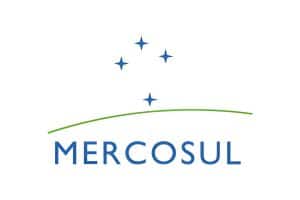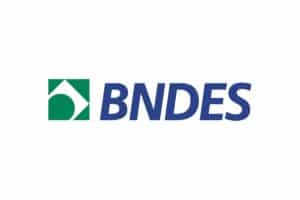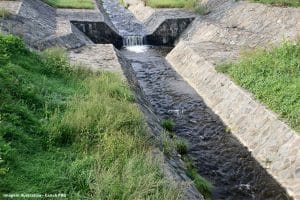Durante o evento Water Week 2016 (que ocorreu durante os dias 10/04 e 16/04 em Washington, D.C.) foi anunciado atualizações na Cartilha para serviços públicos de água e esgoto, emitido pela primeira vez 2008. A cartilha é elogiada quase universalmente por profissionais por sua simplicidade e eficácia. Veja mais detalhes e comentários no texto publicado pelo Water Online na íntegra abaixo. Para ter acesso à Cartilha de 2008, procure por “Cartilha Para Serviços Público de Água e Esgoto” em nossa busca no ACERVO TÉCNICO do Portal Saneamento Básico!
Por Kevin Westerling
EUMprimer
The U.S. EPA and multiple water groups, including the American Water Works Association (AWWA), the National Association of Clean Water Agencies (NACWA), and the Water Environment Federation (WEF), recently gathered during Water Week 2016 (April 10 to 16) in Washington, D.C. to announce updates to an essential guide for effective utility management (EUM). First issued in 2008, Effective Utility Management: A Primer for Water and Wastewater Utilities is the definitive EUM document — by name and on merit. Listening to each group representative espouse the benefits of the primer, the takeaway for me was less about the February 2016 updates and much more about the larger, overriding matter: If utilities aren’t already familiar with this document, they need to be.
The sense from the panel was that big, metropolitan utilities are mostly acquainted with and utilizing the principles set forth in the EUM primer, but that small and medium-sized utilities were lagging. That’s a problem in that smaller systems greatly predominate on the drinking water side, and thus in the overall utility landscape; of about 52,000 community water systems (compared to roughly 16,000 public wastewater systems), the AWWA reports that only 1.5 percent serve more than 50,000. If your utility is among the many that isn’t up to speed, now is the perfect time to catch up.
According to the speakers at the D.C. session, the original EUM primer principles are praised almost universally by practitioners for their simplicity and effectiveness. It reminds me of Mark Twain’s observation on the challenge of brevity: “I didn’t have time to write a short letter, so I wrote a long one instead.” Indeed, there is a certain genius in presenting concepts, especially those broad and complicated (as with utility management) in a way that can be absorbed quickly and universally understood. That’s what the EUM document seems to have achieved, surviving nearly 10 years on with concepts that have remained relevant throughout. Most importantly, the feedback validates that these concepts work.
The updates that have brought the EUM primer back into the limelight account for the technology advancements and emerging concerns of the past decade, detailed in Taking the Next Step: Findings of the Effective Utility Management Review Steering Group. Focus areas that have been integrated into the original guidelines include those related to “smart” systems, climate change, consumer relations, labor, resource recovery, new regulations, and stormwater/watershed management. In keeping with the theme of simplicity, the updated principles from Taking the Next Step are shared in the space below, with credit to all the collaborating organizations.* As AWWA CEO David LaFrance said during the proceedings, “When you come across something as simple and all-encompassing as this, everyone should know about it.”
Product Quality: Produces “fit for purpose” water that meets or exceeds full compliance with regulatory and reliability requirements and consistent with customer, public health, ecological, and economic needs. Products include treated drinking water, treated wastewater effluent, recycled water, stormwater discharge, and recovered resources.
Customer Satisfaction: Provides reliable, responsive, and affordable services in line with explicit, customer-derived service levels. Utilizes a mix of evolving communication technologies to understand and respond to customer needs and expectations, including receiving timely customer feedback and communicating during emergencies. Provides tailored customer service and outreach to traditional residential, commercial, and industrial customers, and understands and exercises as appropriate the opportunities presented by emergent customer groups (e.g., high strength waste producers, power companies).
Employee and Leadership Development: Recruits and retains a workforce that is competent, motivated, adaptive, and safety-focused. Establishes a participatory, collaborative organization dedicated to continual learning, improvement, and innovation. Ensures employee institutional knowledge is retained, transferred, and improved upon over time. Provides a focus on and emphasizes opportunities for professional and leadership development, taking into account the differing needs and expectations of a multi-generational workforce and for resource recovery facilities. Establishes an integrated and well-coordinated senior leadership team.
Operational Optimization: Ensures ongoing, timely, cost-effective, reliable, and sustainable performance improvements in all facets of its operations in service to public health and environmental protection. Makes effective use of data from automated and smart systems, and learns from performance monitoring. Minimizes resource use, loss, and impacts from day-to-day operations, and reduces all forms of waste. Maintains awareness of information and operational technology developments to anticipate and support timely adoption of improvements.
Financial Viability: Understands the full life-cycle cost of utility operations and value of water resources. Establishes and maintains an effective balance between long-term debt, asset values, operations and maintenance expenditures, and operating revenues. Establishes predictable rates — consistent with community expectations and acceptability — adequate to recover costs, provide for reserves, maintain support from bond rating agencies, plan and invest for future needs, and taking into account the needs of disadvantaged households. Implements sound strategies for collecting customer payments. Understands the opportunities available to diversify revenues and raise capital through adoption of new business models.
Infrastructure Strategy and Performance: Understands the condition of and costs associated with critical infrastructure assets. Plans infrastructure investments consistent with anticipated growth, system reliability goals, and relevant community priorities, building in flexibility for evolution in technology and materials, and uncertainty in the overall future operating context (e.g., climate impacts, customer base). Maintains and enhances the condition of all assets over the long-term at the lowest possible life-cycle cost and acceptable risk consistent with customer, community, and regulator-supported service levels. Assures asset repair, rehabilitation, and replacement efforts are coordinated within the community to minimize disruptions and other negative consequences.
Enterprise Resiliency: Ensures utility leadership and staff work together internally, and with external partners, to anticipate, respond to, and avoid problems. Proactively identifies, assesses, establishes tolerance levels for, and effectively manages a full range of business risks (including interdependencies with other services and utilities, legal, regulatory, financial, environmental, safety, physical and cyber security, knowledge loss, and natural disaster-related) in a proactive way consistent with industry trends and system reliability goals.
Community Sustainability: Takes an active leadership role in promoting and organizing community sustainability improvements through collaboration with local partners (e.g., transportation departments, electrical utilities, planning departments, economic development organizations, watershed and source water protection groups). Manages operations, infrastructure, and investments to support the economic, environmental, and social health of its community. Integrates water resource management with other critical community infrastructure, social, and economic development planning to support community-wide resilience, sustainability, and livability to enhance overall water resource sustainability.
Water Resource Sustainability: Ensures the availability and sustainable management of water for its community and watershed, including water resource recovery. Understands its role in the complete water cycle, understands fit for purpose water reuse options, and integrates utility objectives and activities with other watershed managers and partners. Understands and plans for the potential for water resource variability (e.g., extreme events, such as drought and flooding), and utilizes as appropriate a full range of watershed investment and engagement strategies (e.g., Integrated Planning). Engages in long-term integrated water resource management, and ensures that current and future customer, community, and ecological water-related needs are met.
Stakeholder Understanding and Support: Engenders understanding and support from stakeholders (anyone who can affect or be affected by the utility), including customers, oversight bodies, community and watershed interests, and regulatory bodies for service levels, rate structures, operating budgets, capital improvement programs, and risk management decisions. Actively promotes an appreciation of the true value of water and water services, and water’s role in the social, economic, public, and environmental health of the community. Involves stakeholders in the decisions that will affect them, understands what it takes to operate as a “good neighbor,” and positions the utility as a critical asset to the community.
Leadership: Leadership must respond to both internal organizational and broader external community imperatives. It is critical to effective utility management, particularly in the context of driving and inspiring change within an organization and in its surrounding community.
“Leadership” refers both to individuals who can be effective champions for improvement, and to teams that provide resilient, day-to-day management continuity and direction. Effective leadership establishes and communicates a long-term vision for the organization, embodies a commitment to cultivating the organization’s culture, helping to ingrain the methods to achieving the utility’s vision into the organization’s day-to-day operations.
Leaders have an important responsibility to engage proactively with stakeholders and community decision makers, promote the utility as a valued, competent, and trustworthy environmental steward and community asset, and collaborate with external partners (including new and nontraditional partners, like the agricultural sector). Leaders should drive an awareness and commitment to workplace safety, organizational diversity, ethical conduct, and positive morale. Leadership further reflects a commitment to organizational excellence, leading by example to establish and reinforce an organizational culture that embraces positive change, providing new opportunities for emerging leaders, and planning for and assuring a seamless transition to new leadership when required. Organizational improvement efforts require a commitment to continual improvement from the utility’s leadership, including the celebration of small and large victories for the utility.
Strategic Business Planning: Strategic business planning directs and helps to achieve balance and cohesion across the Ten Attributes. A strategic plan provides a framework for decision making by:
• Assessing current conditions, strengths, and weaknesses;
• Characterizing a continuum of possible and likely future conditions;
• Assessing underlying causes and effects of future conditions; and
• Establishing vision, objectives, strategies, and underlying organizational values.
A successful strategic business plan is dynamic and adaptable, allowing the utility to capitalize on new and emerging opportunities. It is made more robust by engaging with staff and external stakeholders, and by utilizing planning methods that can accommodate and address a variety of future operating scenarios (e.g., managing for uncertainty through “stress testing” a plan’s ability to hold up during extreme events, such as extended drought).
A strong plan reflects specific implementation steps that will move a utility from its current level of performance to achieving its vision. Preparation of a strategic business plan involves taking a long-term view of utility goals and operations and establishing a clear vision and mission. The plan, through engagement with external stakeholders, should reflect key community values, needs, and interests. When developed, the strategic business plan should drive and guide utility objectives, measurement efforts, investments, and operations. A strategic business plan can also help explain the utility’s conditions, goals, and plans to staff and stakeholders, stimulate change, and increase engagement and support for improvement efforts. After developing a strategic business plan, it is important that the utility integrates tracking of progress and clear accountability into its management framework, and revisits the plan on a regular basis.
Measurement: Measurement is critical to management improvement efforts associated with the Attributes and is the backbone of successful continual improvement management and strategic business planning. A measurement system serves many vital purposes, including focusing attention on key issues, clarifying expectations, facilitating decision making, supporting learning and improving, establishing and maintaining accountability, and, most importantly, communicating effectively internally and externally. Always keep in mind the management adage, “You can’t improve what you don’t measure.” Successful measurement efforts should be:
• Carefully focused on a limited number of performance measures that are used to drive the utility’s strategic business plan;
• Viewed as a continuum starting with basic internal tracking, and moving to more sophisticated baselining and trend analysis as necessary, development of key performance indicators, and inclusion of externally oriented measures which address community sustainability interests;
• Informed by staff input, driven by and focused on answering questions critical to effective internal management and external stakeholder needs, including information needed to allow governing bodies to comfortably support large capital investments; and
• Supported by a well-defined decision framework assuring results are evaluated, communicated, and responded to in a timely manner.
Continual Improvement Management: Continual improvement management is usually implemented through a complete, start-to-finish management system, also referred to as a “Plan-Do-Check-Act” framework. Continual improvement plays a central role in effective utility management and is critical to making progress on the Attributes. Continual improvement management includes:
• Conducting an honest and comprehensive self-assessment — informed through staff engagement — to identify management strengths, areas for improvement, priority needs, etc.;
• Conducting frequent sessions among interested parties (stakeholders) to identify improvement opportunities;
• Following up on improvement projects underway;
• Establishing and implementing performance measures and specific internal targets associated with those measures;
• Defining and implementing related operational requirements, practices, and procedures;
• Defining supporting roles and responsibilities to derive clear accountability for conducting assessments and implementing performance improvements;
• Implementing measurement activities such as regular evaluation through operational and procedural audits; and
• Responding to evaluations through the use of an explicit change management process.
Continual improvement management is further supported by gap analysis, establishment of standard operating procedures, internal trend analysis and external benchmarking where appropriate, best practice review and adoption, and other continual improvement tools. It can be used as a framework to help utilities understand improvement opportunities and establish explicit service levels, guide investment and operational decisions, form the basis for ongoing measurement, and provide the ability to communicate clearly with customers and key stakeholders.
Knowledge Management (New): Knowledge management is another cornerstone of effective utility management, and is critical to ensuring reliable utility operations. It spans standard operating procedures, human resource management, business systems and operating systems data integration and utilization to support dependable operations and continual improvement across the Ten Attributes.
By ensuring that processes are well documented through writing down “this is how we do things,” regularly updating standard operating procedures and creating shared knowledge among various employee categories, a utility protects is able to respond effectively to the inevitable knowledge loss brought on by employee turnover or unexpected absences. An effective knowledge management system is flexible to the use of new and evolving technologies, and should be updated on an ongoing basis. Automated “smart” systems and data integration/management capabilities are an increasingly important aspect of efficient and effective continual improvement management. These systems and capabilities are available across all areas of utility management, and can substantially improve the ability of utilities to track performance in real time, identify variability, and manage performance more effectively and precisely.
Learn more about EUM in the water sector at www.watereum.org.
*Collaborating Organizations: Association of Clean Water Administrators (ACWA), the Association of Metropolitan Water Agencies (AMWA), the American Public Works Association (APWA), the Association of State Drinking Water Administrators (ASDWA), the American Water Works Association (AWWA), the U.S. Environmental Protection Agency (EPA), the National Association of Clean Water Agencies (NACWA), the National Association of Water Companies (NAWC), and the Water Environment Federation (WEF).



































